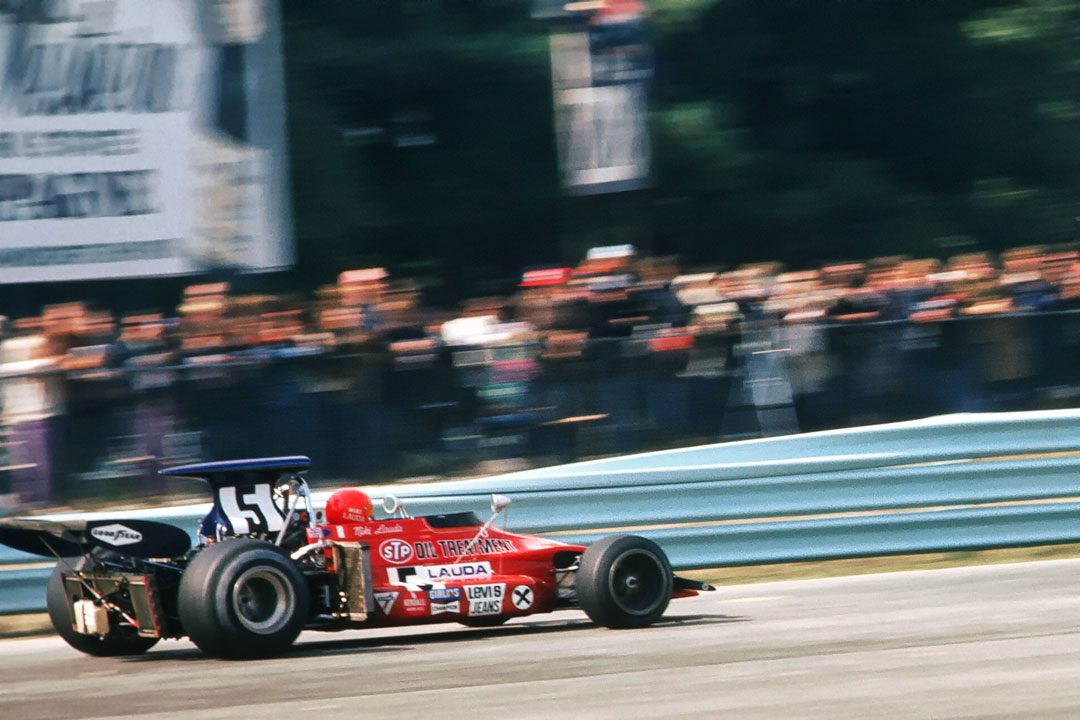Today’s Post by Joe Farace
“Whenever I see something that challenges me, I take it on.”—Niki Lauda
The 1972 United States Grand Prix was held on October 8, 1972 at the Grand Prix race course in Watkins Glen, New York and I was there. Jackie Stewart, having just lost his World Champion’s crown to Emerson Fittipaldi, dominated the entire weekend with pole position, fastest lap and the win completing a sweep of the North American races. It was the twenty-second victory of the Scot’s career and his fourth in 1972.

How I made this shot: My photograph of Niki Lauda, who did not even finish the race, was originally captured on Ektachrome color slide film with a Nikon F camera; lens and exposure unrecorded. To make the photograph I used an old technique for photographing cars and other stuff in motion called panning.
Shooting Motorsports
You can always stake out a location around the track and use a fast shutter speed to stop a racecar—dead—on the track but that only makes it look as if it were parked there, instead of doing 150mph. Instead, you might try using the race team’s practice times to practice your panning technique.
Here’s what you should do: Keep both eyes open so you can see the car coming down the track and frame it before snapping the shutter. To make a good panning shot try using a slower shutter speed than you might normally use for a static car photograph. Try using speeds between 1/30 to 1/80 sec. (That’s what you’ll do during practice—you’ll practice too,) Follow the car until it’s where you want in the viewfinder, tripping the shutter as you continuously pan the camera. Don’t stop moving the camera after you click the shutter! Follow through maintaining a smooth motion so the camera isn’t jerked at the end of the exposure and the effect is ruined by camera motion blur.
The above photograph was scanned by ScanMyPhotos who offers a wonderfully seamless process for digitizing all of images that have been laying dormant for many years and helps bring them back to life.
If you enjoyed today’s blog post and would like to buy Joe a cup of Earl Grey tea ($2.75, click here. And if you do, thank so very much.